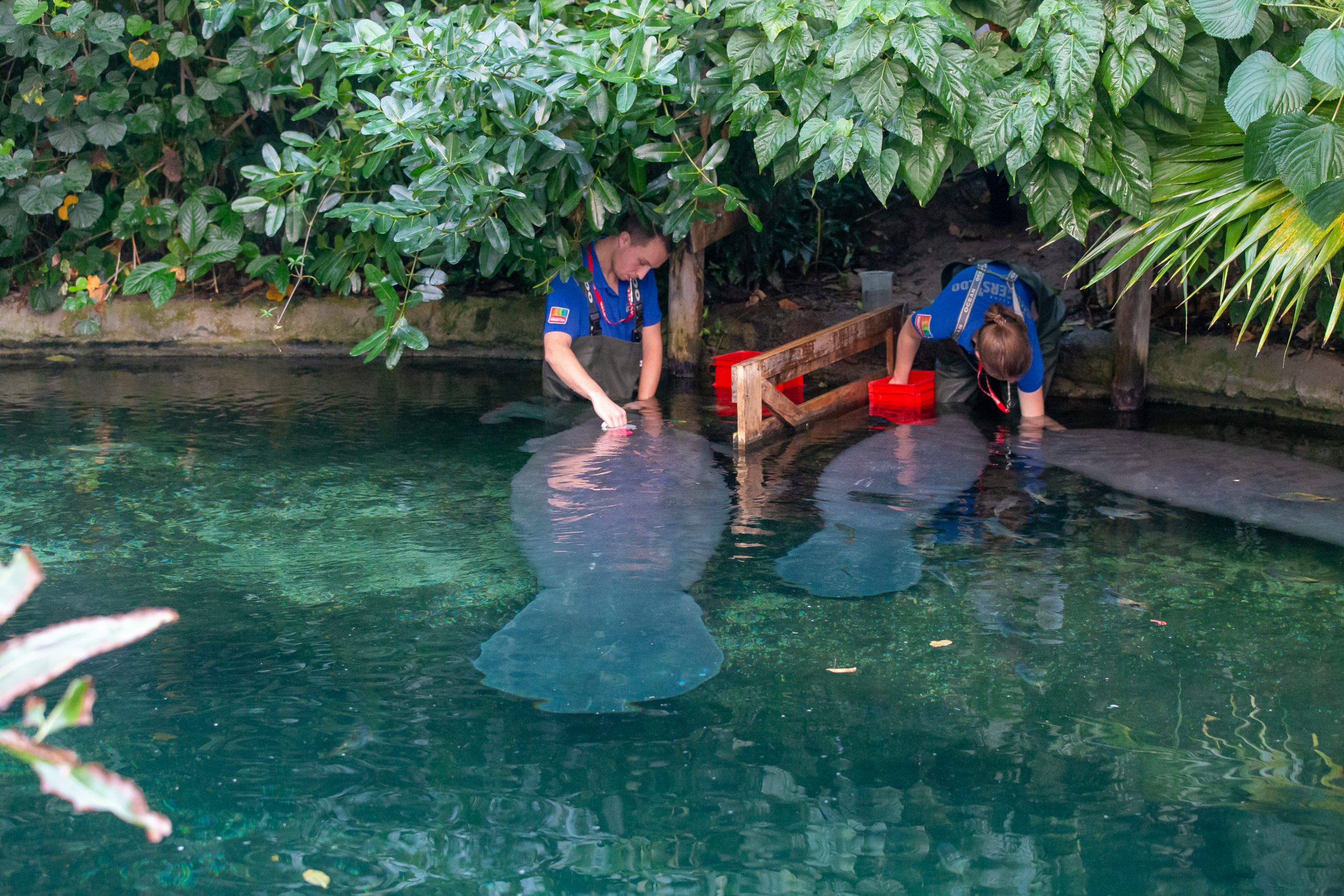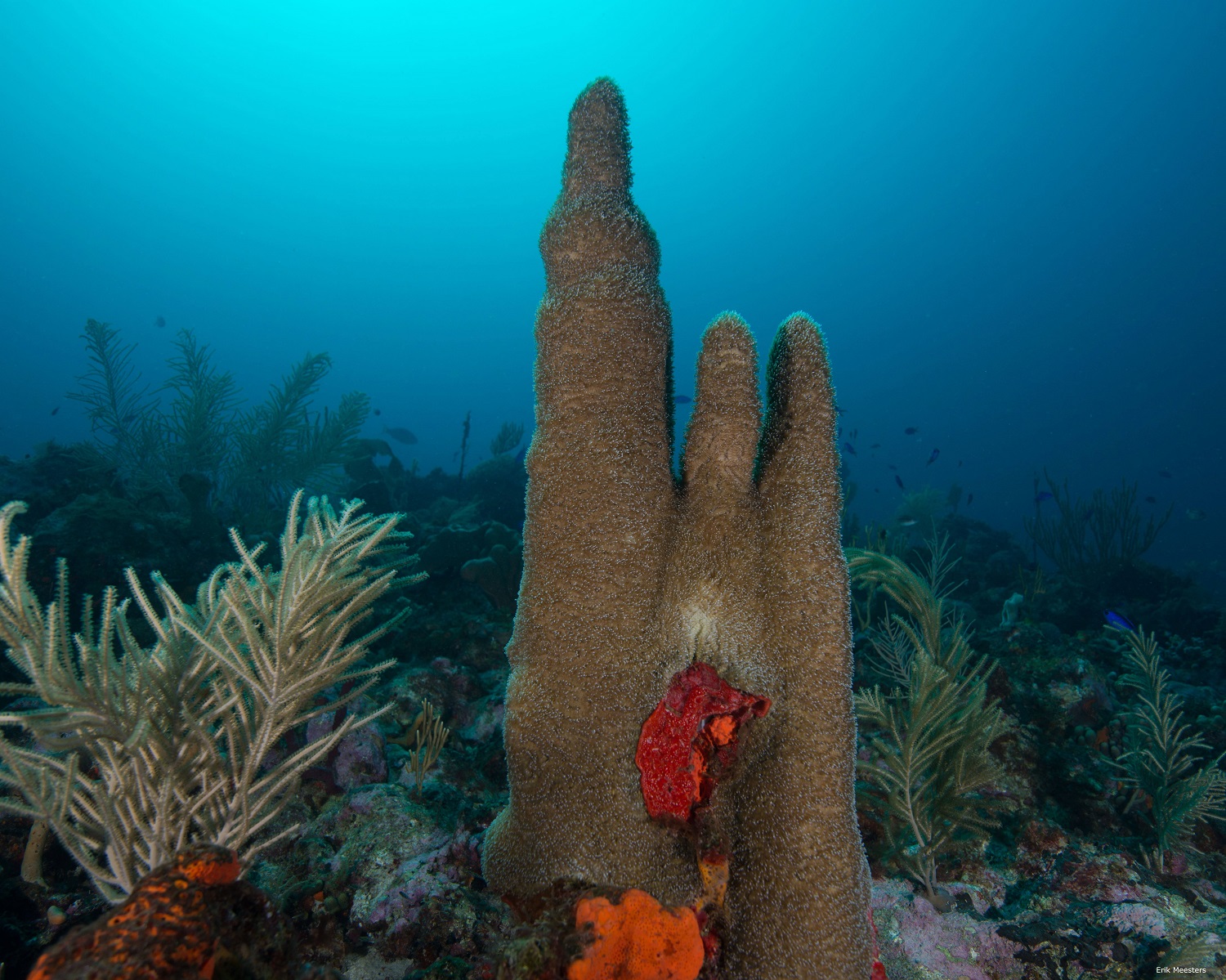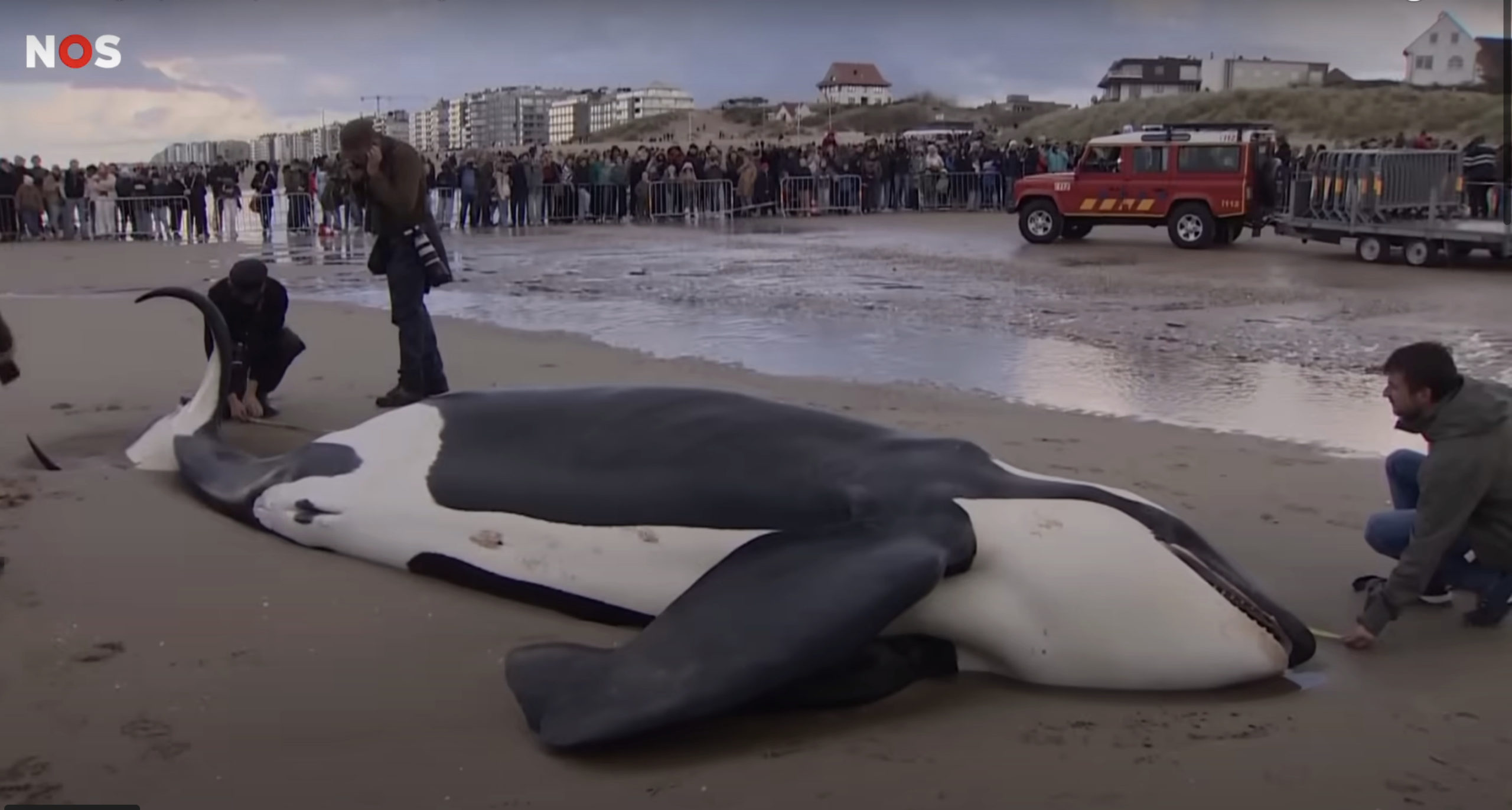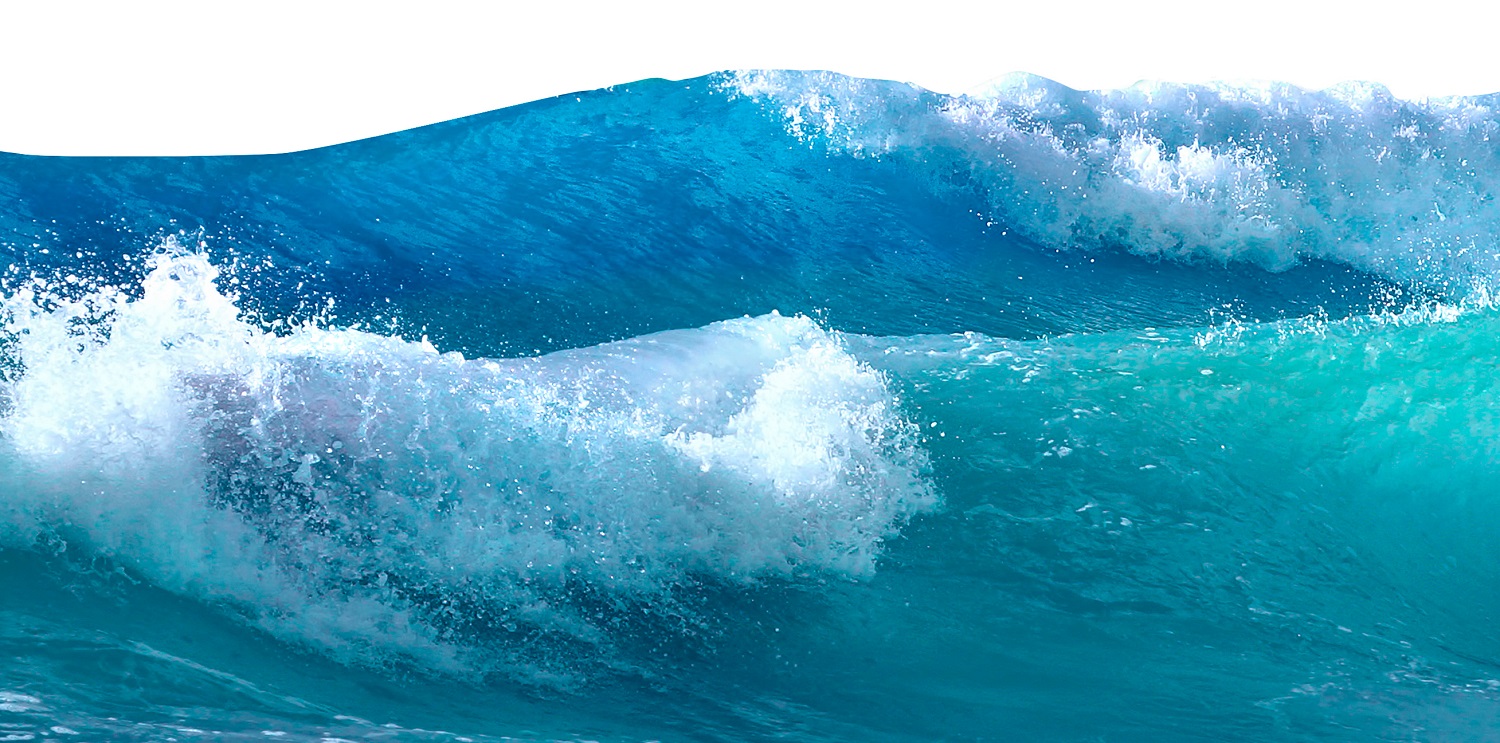In the state of Florida (USA), food scarcity caused mass mortality among manatees. To help protect its conspecifics, a Caribbean manatee in Burgers’ Zoo in Arnhem has been fitted with a camera worth thousands of euros.
The carers in Burgers’ Zoo are well aware of manatees’ huge appetite. They feed the animals dozens of kilos of greens, ranging from endive to pak choi, every day. As of today, they have an additional responsibility: helping PhD candidate Fee Smulders (Marine Ecology) mount an underwater camera on a manatee.
The zookeepers give one of the three manatees approximately a month to get used to a special underwater camera with suction cups. The experiment is to determine whether the camera stays attached and where on the animal it may best be mounted. Smulders is to travel to Mexico in the summer and intends to secure the device, which costs some ten thousand euros, to wild manatees. ‘Manatees are, in fact, the large herbivores of the marine world’, the researcher explains. ‘We want to investigate what sea grass they prefer, where they graze and how they impact the marine world. And how they are influenced by large predators such as sharks.’
The controlled environment of a zoo is a better place for testing than in the wild
Fee Smulders, PhD candidate Marine Ecology
Manatees are endangered. Smulders points to Florida, where hundreds of manatees perished through food scarcity prompted by pollution. Tossing some 1400 kilogrammes of lettuce in the ocean appeared to alleviate the situation a year ago but is not a permanent solution. ‘We want to protect the species, and this requires more knowledge about how the animals use their habitat’, Smulders states.
Arnhem versus Mexico
In Burgers’ Zoo’s mangrove hall, which is based on the tropical region in Belize that the zoo has been helping conserve for decades, it takes a while before the male manatee allows the zookeepers to attach the underwater camera to its body. Not surprising, with a crowd of onlookers, including journalists and photographers in their proximity, say zookeepers Indra Saft and colleague Joeri Peters. While wading through the waist-high water, they coax the animal with a pail of red beets, sweet potatoes, and a whistle. As soon as Peters has gingerly placed the camera and pushed the suction cups, the animal swims away with a brisk tail wag.
In the wild, the camera will automatically dislodge itself from the animal after twenty-four hours, Smulders states. Its neon-pink colouring and GPS transponder should enable researchers to recover the buoyant device. Whether wild manatees in Mexico will react similarly to their peers in the Arnhem Zoo is unknown. ‘We do not know yet, but these manatees are very valuable’, Smulders underscores. ‘It is better to test issues such as: how do we attach a camera? What does it look like? Does the camera work? In a controlled environment rather than in the wild.’
This article was previously published in De Gelderlander / Lars Barendregt.

 Photo Theo Kruse
Photo Theo Kruse 

